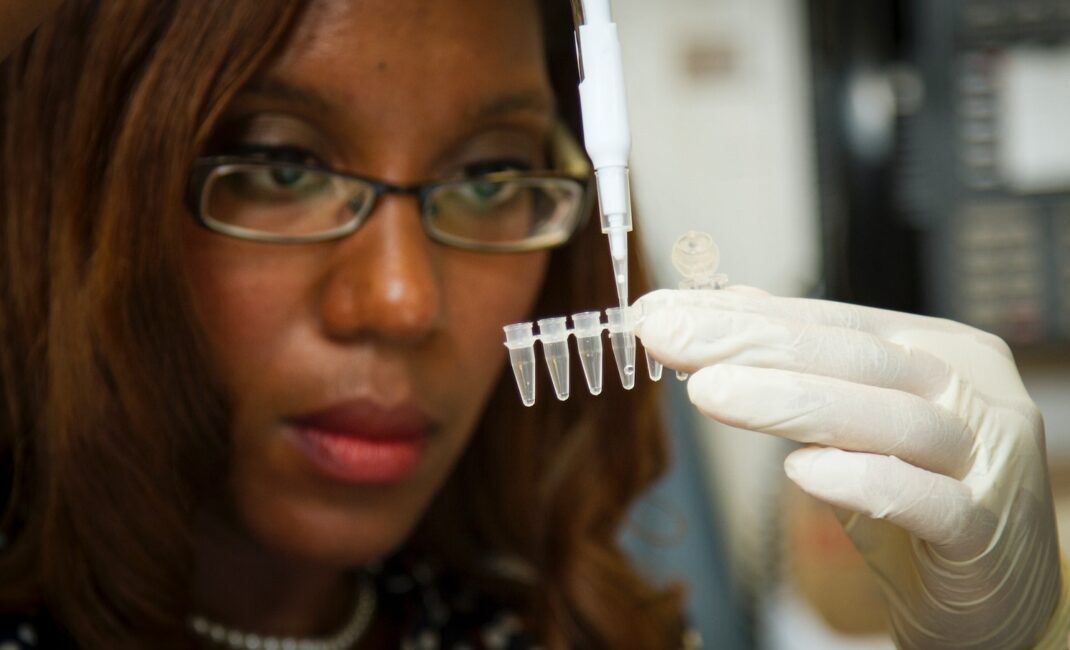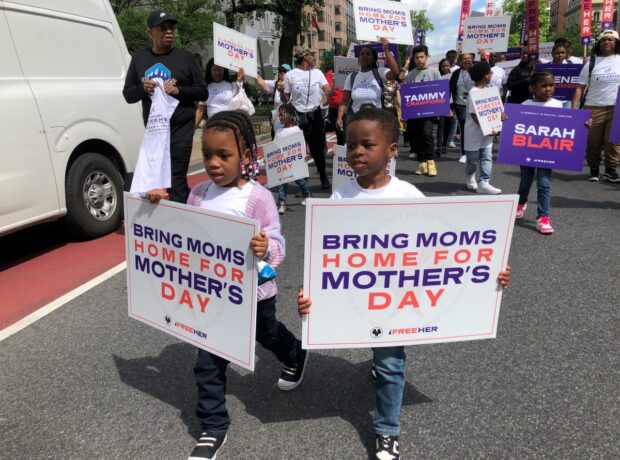Why are Women of Color in STEM faced with a graduate student mental health crisis and a challenge to cling on as each stage of academia filters black women out? Yale PhD student Kathryn Graves finds that behind the walls of the ivory tower, academia is wringing the life out of its female scientists of color.
Content warning: this article includes mention of suicide
During the spring semester of my senior year at Brown University, a first-year PhD student in the physics department jumped from the 12th floor of the Sciences Library. Like the rest of the Brown community I was devastated, but at the time was also an outsider looking in.
The phrase “graduate student mental health” was amorphous to me, and it wasn’t until I was in the midst of my own mental health crisis in the third year of my Psychology PhD at Yale – suffocated by feelings of inadequacy and hopelessness – that I began to comprehend why I and so many of my peers, in particular Women of Color (WoC) scientists, were not ok.
Nonetheless I got through my crisis, put my head down, and got back to work. Less than a year later a friend and colleague in my department, a Latinx student one year above me, took her own life.
In study after study, Women of Color overwhelmingly report links between gendered and racialized experiences and increased depression, anxiety, and overall psychological distress while pursuing graduate degrees in STEM.
Suffice it to say, behind the walls of the ivory tower, academia in the US is wringing the life out of its female scientists of color.
A tragedy within itself, the barrage of attacks on WoC graduate student mental health also contributes to the ongoing phenomena of WoC leaving or being filtered out of academia at each stage, known as the “leaky pipeline” in Science, Technology, Engineering, and Mathematics (STEM).
With better mental health care increasingly on the docket of the rising graduate student unionization efforts, it’s important to understand the unique challenges that female scientists face that make an overhaul of institutions’ approaches to graduate student mental wellbeing an absolute necessity.
STEM has diversified – on paper
In recent years, institutions at all levels of academia have acknowledged the criticality of diversity in STEM. The National Institutes of Health, the United States’ medical research agency and the largest single public funder of biomedical and behavioral research in the world, has developed a list of “Populations Underrepresented in the Extramural Scientific Workforce” and put forth a number of research funding opportunities for institutions whose proposals concretely address disparities in representation and means of ameliorating them.

Photo by Christina @ wocintechchat.com on Unsplash
At the university level, dedicated offices like Yale’s Office for Graduate Student Development and Diversity and Berkeley’s Office for Graduate Diversity have become more commonplace, as has the presence of diversity statements on department websites across disciplines.
Taken at face-value, then, one might think that academia has at last become hospitable to underrepresented minority (URM) scientists. However, these high-visibility gains often belie the day-to-day lived experiences of female scientists of color, whose hard-fought for acceptances into elite academic spaces are undercut by the forces therein that derail their mental wellbeing.
No one is doing well. Women of Color are doing worse
Across the board, higher education presents a particularly dire landscape for the mental health of its participants. Graduate students are six times as likely as the general population to meet the criteria for clinical diagnosis of anxiety and depression.
In one study, more than 39% of graduate students demonstrated moderate to severe depression symptoms (as compared to 6% of the general population), and 41% reported experiencing symptoms of anxiety (as compared to 6% of the general population).
The primary reasons for this? A non-existent work-life balance and a weak, unsupportive, negative relationship with their primary advisor – two hallmark criticisms of the average graduate student experience.

Photo by ThisisEngineering RAEng on Unsplash
However, the outlook is particularly bleak for women of color pursuing STEM graduate degrees. On top of these already formidable challenges exist myriad sources of race and gender based discrimination that compound depressive symptoms and increase traumatic stress for WoC, including having their skills delegitimized, having their presence and contributions ignored, and having their belongingness in STEM fields questioned. In a podcast discussing the importance of building community in graduate school, Dr. Joy Woods Bennett describes a moment a professor openly questioned her belongingness in a PhD program:
“This professor looked at me, and was like ‘hmmm…,’ because I was trying to need [sic] letters for rec for PhD, and was like, ‘hmmm…I just don’t feel like as though PhD material, like you seem more hands-on out there in the community…I don’t really know if you need a PhD…,’ but like, I’m here because I need to be.”
To the outside world, these issues are often only salient in the occasional high-profile instances of abuse that breach the ivory tower and enter the mainstream. But in practice, there are numerous forces at play behind the tower walls whose effects on women of color are much more insidious, and are baked into the fabric of academia.
Women of Color face uniquely hostile environments
In 2019, Dartmouth College reached a 14.4 million dollar settlement in the case of nine women, all current or former students and researchers, who alleged that they had been raped, sexually assaulted, or harassed by three Dartmouth professors in the Department of Psychological and Brain Sciences.
The details of the case were appalling – three men weaponizing their unchecked power to force their sexual will on their female trainees.
But as was noted in the lawsuit, these instances did not happen in a vacuum, but instead within a negligent department that had passively normalized harassment. And while the Dartmouth case is particularly atrocious, it is by no means isolated, and instead represents a larger culture of toxicity in science.
WoC in STEM frequently report instances of both sexual harassment and hiring discrimination within their graduate programs, as well as regular exposure to microaggressions that consist of invalidations of their intelligence or reinforcement of gender roles. For instance, male advisors may push secretarial duties disproportionally onto female graduate students, or may overwhelmingly expect them to perform uncompensated department service roles (i.e. organizing colloquia, volunteering, etc).

A postdoctoral fellow in the National Cancer Institute’s Experimental Immunology Branch, pipetting DNA samples into a tube for polymerase chain reaction, or PCR, a laboratory technique used to make multiple copies of a segment of DNA. Photo by National Cancer Institute on Unsplash
Female scientists of color additionally contend with discrimination and racism from predominantly White departments in the form of belittlement and discrediting by non-underrepresented minority (non-URM) professors and peers.
External toxicity breeds internal turmoil
On April 10th, 2019, MIT tweeted an image of Dr Katie Bouman moments after the first ever black hole image was processed. Dr Bouman had helped develop the code to find the black hole, and the photo captured her reaction to the result of that work.
No sooner had the photo gone viral than countless sexist trolls began questioning the legitimacy of the image, the magnitude of Dr Bouman’s contribution, and even her knowledge of her own field of expertise.
Here’s the moment when the first black hole image was processed, from the eyes of researcher Katie Bouman. #EHTBlackHole #BlackHoleDay #BlackHole (v/@dfbarajas) pic.twitter.com/n0ZnIoeG1d
— MIT CSAIL (@MIT_CSAIL) April 10, 2019
This progression of events echoed to the public the same narrative that is constantly fed to Women of Color graduate students through the laundry list of disparities already discussed – that they are not welcome in STEM.
In the face of sexism, racism, sexual harassment, and intellectual discreditation, WoC in STEM can feel both hypervisible and invisible at the same time. In departments that are often overwhelmingly white and male, they can feel pressured to “represent” their race and gender while at the same time distancing themselves from their identities out of fear of confirming negative stereotypes – a phenomena known as “stereotype threat.”
Yet, despite the magnifying glass-level of scrutiny on perceived faults, there is no commensurate monitoring of the race and gender-specific disparities impacting underrepresented students.
With few, if any, colleagues and mentors that look like them and share their experiences, WoC graduate students are made to feel isolated, and often identify a sense that they don’t belong in their own departments or don’t have proper supports in place to work through challenges that arise. In a video discussing allyship in graduate school, Dr Stephanie Castillo, a science communicator who started the platform Phuture Doctors to make STEM more inclusive, posted a video to her Instagram account, discussing allyship in graduate school. In it, she recounts the aftermath of a racialized experience that occurred during her PhD studies:
“Today in our lab we experienced something pretty crappy in the sense that our printer was hacked and we got a very hateful flyer that had very derogatory and racial slurs on it that made my colleagues and I very uncomfortable. And so when we tried to address it to people of power, people in power, our faculty members, some did the justice of helping us out and trying to find a solution right away, while others kind of just danced around the problem and didn’t really try to help the issue at hand.”
In the end, these experiences have disastrous impacts on female graduate student mental health, and result in disproportionately frequent exoduses from academia. Sure enough, feelings of isolation have been identified as a key contributor to Black women considering withdrawal from STEM graduate programs.
The future is female (and mentally healthy)
If STEM is to truly embrace diverse scientists, it must be intentional about fostering cultures that safeguard their mental health.
Students at numerous institutions have established grassroots initiatives to equip diverse applicants with the tools to succeed, including the Northwestern University Psychology Department’s “Sneak Peek” Program and the “Yale Chemistry Bootcamp”. These events provide an insider’s perspective from graduate students, faculty, and professionals into how to succeed in STEM, discussing everything from what STEM careers can look like to how to apply to graduate school and get research experience. As the wave of graduate student unionizations sweeps universities across the country, more and more union contracts are including provisions for improved mental health resources, putting pressure on institutions to do better by their graduate work force. However, the responsibility cannot fall squarely on students.

Photo by Diane Serik on Unsplash
As part of compliance, departments should require all graduate advisors to participate in training in inclusive mentoring practices and pedagogy, and mandate equal service contributions so that labor is not disproportionately shouldered by women of color.
Institutions have a duty to be proactive about providing mental health resources for graduate students, providing an embedded mental health clinician, for example, as a dedicated resource for graduate student counseling.
If STEM institutions value diverse scientists, it’s time for them to prove it – not just by publicly appealing to WoC to join their workforce, but by taking an active responsibility in safeguarding the mental health of those they are lucky enough to recruit.
Suicide is preventable and when life is difficult, support is available – day or night, 365 days a year. In the UK, the Samaritans’ helpline is available for free by calling 116 123, emailing Jo@samaritans.org or visiting samaritans.org to find your nearest branch. In the US, the 988 Suicide and Crisis Lifeline is a national network of local crisis centres that provide free and confidential emotional support 24 hours a day. Call or text 988 or visit 988lifeline.org
Featured image by ThisisEngineering RAEng on Unsplash
Read more:



